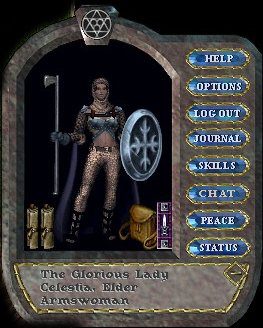 A lot has happened in this last year for me with the Discovery Educator Network. The thing that was most exciting was being named one of five DEN Gurus for 2012. This was something I had wanted for a very long time, and being privileged to get the title during a year when there were so many worthy opponents humbled me.
A lot has happened in this last year for me with the Discovery Educator Network. The thing that was most exciting was being named one of five DEN Gurus for 2012. This was something I had wanted for a very long time, and being privileged to get the title during a year when there were so many worthy opponents humbled me.
I’ve given a lot of thought to my experiences with the DEN. I’ve been a member since January, 2005, and have ridden the roller coaster that has facilitated the growth of the network, not only in numbers, but in a certain level of maturity as well over the last seven years.
What happened to me in January, 2005, when a coach/teacher I was replacing mid-year handed me a sheet of paper and said “this has something to do with technology, you might be interested in it”, was life-changing, both personally and professionally. That piece of paper had the pass-code for my district’s unitedstreaming (now known as Discovery Education streaming) account. I had no idea what it was, but I was desperate for help. I visited the website, entered the pass-code, and discovered a vast library of videos, but more importantly, lesson plans and related materials that I could use instantly in my classroom. Later that year, I was invited to a Day of Discovery and even though the roads were icy and school ended up being closed that day, I made the trek to see what more I could learn from Discovery. That day, I became a member of the DEN, and would later become a STAR when the program was rolled out during regional institutes that summer.
I loved the DEN, and when the big “shake-up” happened, leaving only five people on the DEN team, I was devastated. I can remember (even though he probably doesn’t) having a conversation with Lance Rougeux, who I had never met at that time, about how disappointed I was and how unprofessional it all seemed. Lance was very patient with me, which is amazing because I’m sure I wasn’t the only person who he had heard from, and he didn’t even know me. Lance explained to me that the decisions that had affected so many were completely out of the DEN team’s hands, and began filling me in on the vision the five had for the future of the DEN. He spoke of a DEN that was by teachers, for teachers. He talked of opportunities to change the DEN for the better. I was skeptical, but if those five people, who could have easily thrown in the towel at that point, believed in it, then I was willing to make the effort to help them succeed.
A few months later, the announcement of the formation of leadership councils in each state was made and I jumped on board. In the very beginning, it was myself and Linda Rush who began building the Texas leadership council. Shortly after signing on, we attended a professional development event hosted by the DEN and AFI called “Lights, Camera, Education!”, where I finally got to meet Lance Rougeux for the first time, and where Linda and I recruited Howard Martin, Anne Jablonski, Beth Weeks, and Judith Valle to join our council. Later, we added Lori Reed as a representative from west Texas. I wrote the blog alone for two years, while Linda worked with the other LC members to create events and begin to make a name for our LC. Eventually, I served as chair for two years, then Linda, Howard, and I stepped back to make room for a new, energetic leadership for the LC, which had grown to nearly 30 members. Recently, new changes to the structure of the LCs were announced, and intead of being skeptical this time, I jumped in and joined the Innovation and Strategy team.
What does all this have to do with the Zen of the DEN? To me, it is evidence of the things that have made the DEN so great. I am often asked why I think the DEN is best over other educator groups. Part of my answer, of course, has to be because it got me first, but there are other reasons that I think can point to the essence of the DEN:
1. The DEN is ever-changing. The DEN team is reflective and flexible. They have seen ebbs and flows in their numbers, they have worked through varying policies, they have tried innovative things and been willing to give them up when the time is right. Without this adaptability, the DEN would not have survived.
2. The DEN is a sharing group. Because of my affiliation with this group, I am able to tap into the collective expertise of hundreds of educators across the country. Above that, I am introduced to additional experts who I can learn from. This may be at a summer institute, or it might be through the Twitter network that I am only a part of because Steve Dembo said it was a good idea (and he was definitely right).
3. The DEN is a wonderful venue for professional development. I have often told people that I learn more in the first ten minutes of a Discovery event than I do in a day of traditional professional development. Those of you who have attended such an event know what I’m talking about – that sense of being overwhelmed, but so excited with new knowledge . . .
4. The DEN is a friendship. The warmth and genuine appreciation the members of the DEN have for each other define it as a group that is more than a professional association. When people walk up to me because I’m carrying a DEN bag or wearing a DEN shirt and they introduce themselves as a member of the DEN, I immediately feel a kinship to them and I hope that I reflect that feeling back to them.
Are we enlightened? No. If we ever start to think so, we will be wrong. But for some of us, the DEN can give us new ways of thinking about things, new people to bounce ideas off of, and a new understanding and appreciation of networking.
I’m excited to see where the next seven years takes me . . .






_0.png)



What leadership really means
As part of my presentation, I shared the video some of you may be familiar with, “Leadership Lessons from Dancing Guy“. This video tied in well to the keynote speaker the day before, Steve Dembo, who had let us all know that the way to build new realities in school is to start off looking like a nut and hope that others will decide to join you so that you’ll look like less of a nut.
I have a respect for the video and the message it delivers, but it misses one vital point. In the video, nearly the entire crowd eventually joins in, either because it looks like fun or because everyone else is doing it and they don’t want to be ridiculed for not joining in. What I see in the video that is vitally important, however, is that the last folks who joined in the dance likely had no idea what the point of the dance was to begin with.
The movement caught on, but those who followed it didn’t necessarily know why it started in the first place.
In education, it is so important that we not only act as the lone dancing guy, or the first follower, but that we make sure that our message is so clear that it gets passed on through those that choose to follow.
If the dance itself becomes the focus, our vision is lost.
True leadership is often about laying the path and providing a venue for the “dancers” to take risks and for the “crowds” to follow. Laying that path takes strategic planning, future forecasting, and flexibility along with an acknowledgement that we are simply putting opportunities in place for others to grow.
Isn’t that, ultimately, what “school” is about?
Leave a comment
Posted in Commentary, Teaching Truths
Tagged education, Leadership